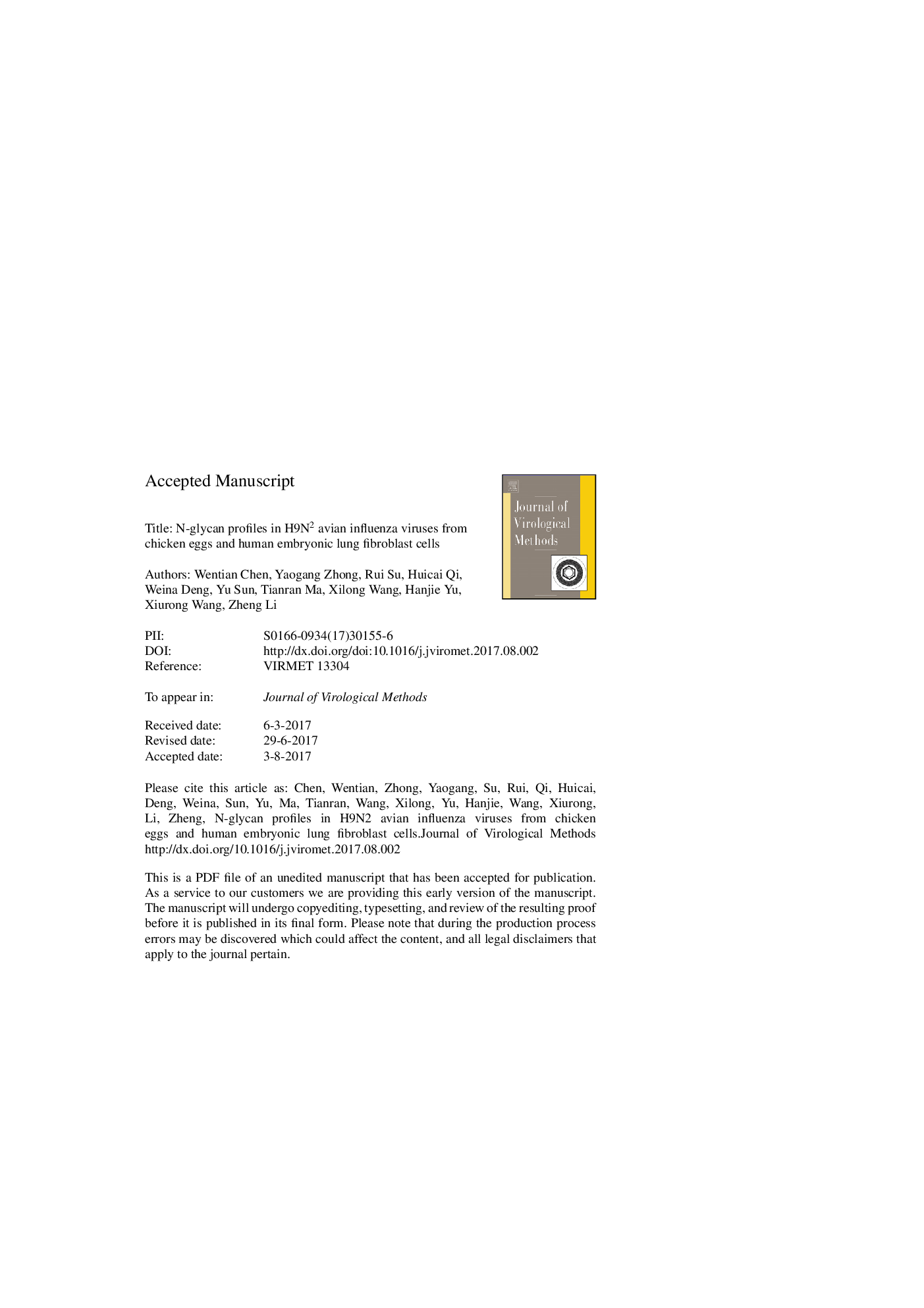| کد مقاله | کد نشریه | سال انتشار | مقاله انگلیسی | نسخه تمام متن |
|---|---|---|---|---|
| 5672979 | 1593428 | 2017 | 29 صفحه PDF | دانلود رایگان |
عنوان انگلیسی مقاله ISI
N-glycan profiles in H9N2 avian influenza viruses from chicken eggs and human embryonic lung fibroblast cells
دانلود مقاله + سفارش ترجمه
دانلود مقاله ISI انگلیسی
رایگان برای ایرانیان
کلمات کلیدی
موضوعات مرتبط
علوم زیستی و بیوفناوری
ایمنی شناسی و میکروب شناسی
ویروس شناسی
پیش نمایش صفحه اول مقاله

چکیده انگلیسی
N-glycosylation can affect the host specificity, virulence and infectivity of influenza A viruses (IAVs). In this study, the distribution and evolution of N-glycosylation sites in the hemagglutinin (HA) and neuraminidase (NA) of H9N2 virus were explored using phylogenetic analysis. Then, one strain of the H9N2 subtypes was proliferated in the embryonated chicken eggs (ECE) and human embryonic lung fibroblast cells (MRC-5) system. The proliferated viral N-glycan profiles were analyzed by a glycomic method that combined the lectin microarray and MALDI-TOF/TOF-MS. As a result, HA and NA of H9N2 viruses prossess six and five highly conserved N-glycosylation sites, respectively. Sixteen lectins (e.g., MAL-II, SNA and UEA-I) had increased expression levels of the glycan structures in the MRC-5 compared with the ECE system; however, 6 lectins (e.g., PHA-E, PSA and DSA) had contrasting results. Eleven glycans from the ECE system and 13 glycans from the MRC-5 system were identified. Our results showed that the Fucα-1,6GlcNAc(core fucose) structure was increased, and pentaantennary N-glycans were only observed in the ECE system. The SAα2-3/6 Gal structures were highly expressed and Fucα1-2Galβ1-4GlcNAc structures were only observed in the MRC-5 system. We conclude that the existing SAα2-3/6 Gal sialoglycans make the offspring of the H9N2 virus prefer entially attach to each other, which decreases the virulence. Alterations in the glycosylation sites for the evolution and role of IAVs have been widely described; however, little is known about the exact glycan structures for the same influenza strain from different hosts. Our findings may provide a novel way for further discussing the molecular mechanism of the viral transmission and virulence associated with viral glycosylation in avian and human hosts as well as vital information for designing a vaccine against influenza and other human viruses.
ناشر
Database: Elsevier - ScienceDirect (ساینس دایرکت)
Journal: Journal of Virological Methods - Volume 249, November 2017, Pages 10-20
Journal: Journal of Virological Methods - Volume 249, November 2017, Pages 10-20
نویسندگان
Wentian Chen, Yaogang Zhong, Rui Su, Huicai Qi, Weina Deng, Yu Sun, Tianran Ma, Xilong Wang, Hanjie Yu, Xiurong Wang, Zheng Li,